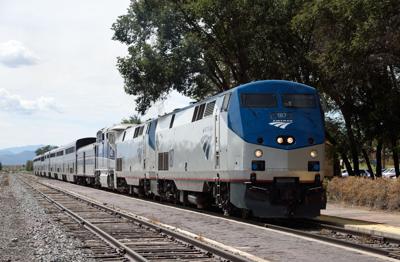Infrastructure emerged as a key area of focus for Gov. Bill Lee after his reelection in November. Congestion, particularly through Tennessee’s major urban centers, has been his keyword.
Lee introduced a wide-ranging highway repair and expansion plan earlier this month that includes toll lanes and addresses the state’s billion-dollar backlog of maintenance. “The Governor has tasked TDOT to leave no stone unturned when looking at options to relieve congestion,” a TDOT spokesperson told the Scene in a written statement. “TDOT recognizes the role passenger rail plays in this problem.”
A lot of the legwork for Lee’s vision falls to TDOT Commissioner Butch Eley. Eley sent a letter to U.S. DOT associate administrator for railway development Paul Nissenbaum on Dec. 15, days before the federal government opened up grant applications.
“The state of Tennessee is currently conducting a statewide study on the potential for passenger rail service linking the major cities in each of the grand divisions of the state,” Eley says. The state is caught waiting on a July 1 deadline, when the Tennessee Advisory Committee on Intergovernmental Relations (TACIR) is set to deliver its rail report, and the U.S. DOT’s federal funding applications, due March 20. “While we are not in a position to submit a specific corridor for consideration as part of FRA’s current corridor solicitation, we did want to submit a letter to your agency to let you know that there is great interest in Tennessee when it comes to passenger rail.”
The U.S. DOT announced a train push in the spring. Passenger rail expansion is a key component of 2021’s Bipartisan Infrastructure Law, which includes $8 billion in capital grants to establish new rail corridors in the U.S. That process officially started rolling on Dec. 20, when the Department of Transportation and Federal Rail Authority opened up grant applications. Though those close in March, Tennessee won’t move forward with any applications for federal funding until its own report is done in July, according to a written statement from TDOT.
Nashville famously lost its Amtrak service in 1979 despite a prolonged effort from then-U.S. Rep. Al Gore to prevent service cuts. Amid white flight in the midcentury, much of the business and political elite took their wealth and influence to the suburbs and adopted a car commute, leaving rail travel to languish in the South. Now, with population booming in urban centers across the state and region, rail appears to be a viable traffic solution for many residents and politicians on both sides of the aisle. Amtrak has taken notice, including an Atlanta-Chattanooga-Nashville line in planning documents. A one-way trip would take about three hours, according to Amtrak, but poor existing rail infrastructure would make the line expensive and labor-intensive to build. Massive interstate projects typically rely on a combination of funding sources including federal grants.
Planners say reducing congestion must also include local mass transit options. As rush hour worsens in Nashville, trains have been a commuter’s daydream: efficient, environmentally preferable, fast, potentially inexpensive, but politically and economically out of reach for a city designed for cars and just beginning to plan for pedestrians and cyclists. But the ghost of Let’s Move Nashville, the 2018 rail push referendum, still looms large. It was killed with the help of Koch brothers money, NIMBYism and a concurrent scandal in the mayor’s office, adding to mass transit’s reputation as a political loser for local politicians. Bipartisan momentum at the state level could help get things moving again.
TDOT hopes to apply for future funding after the state has finished its passenger rail study, telling the Scene, “We will have the ability to refine our selection at a future date when we are better informed by the TACIR study results.”





